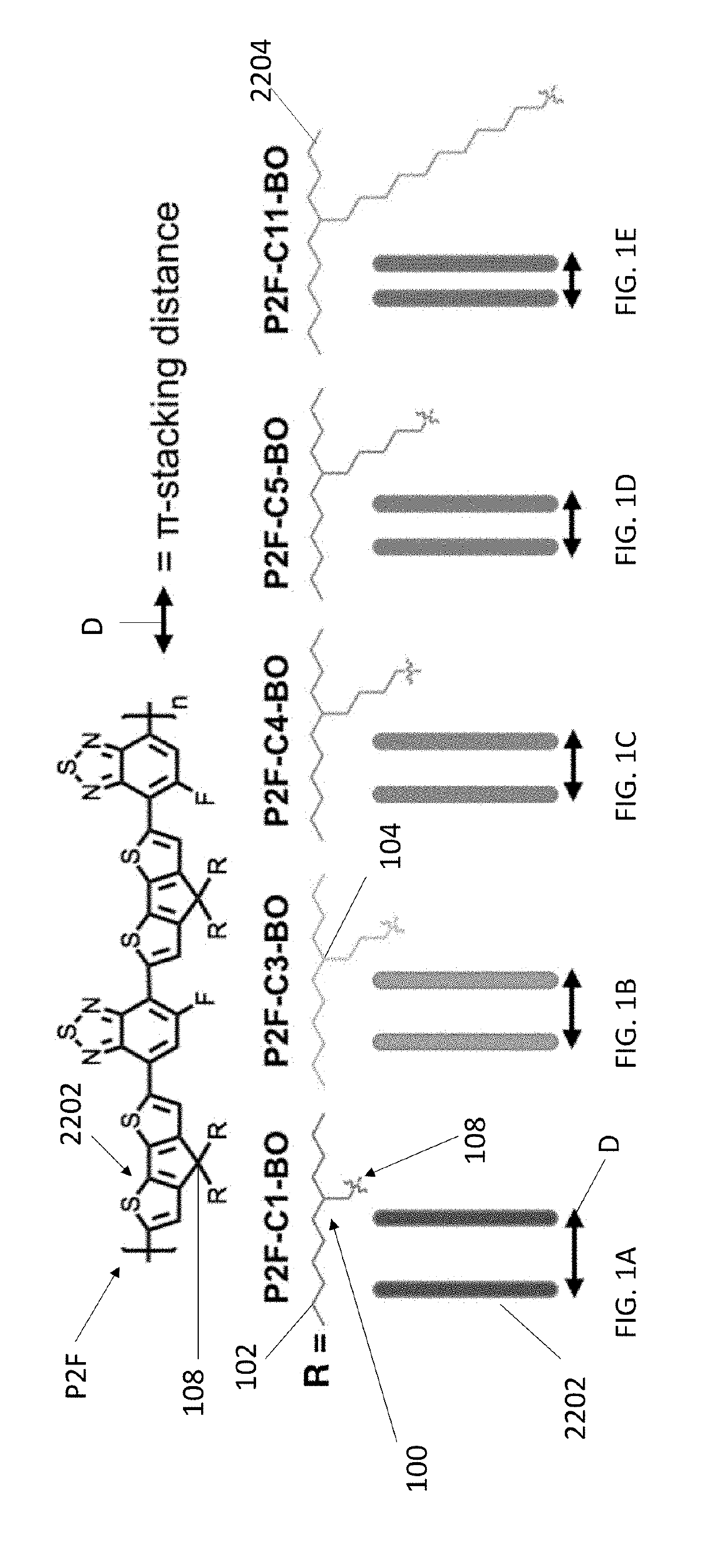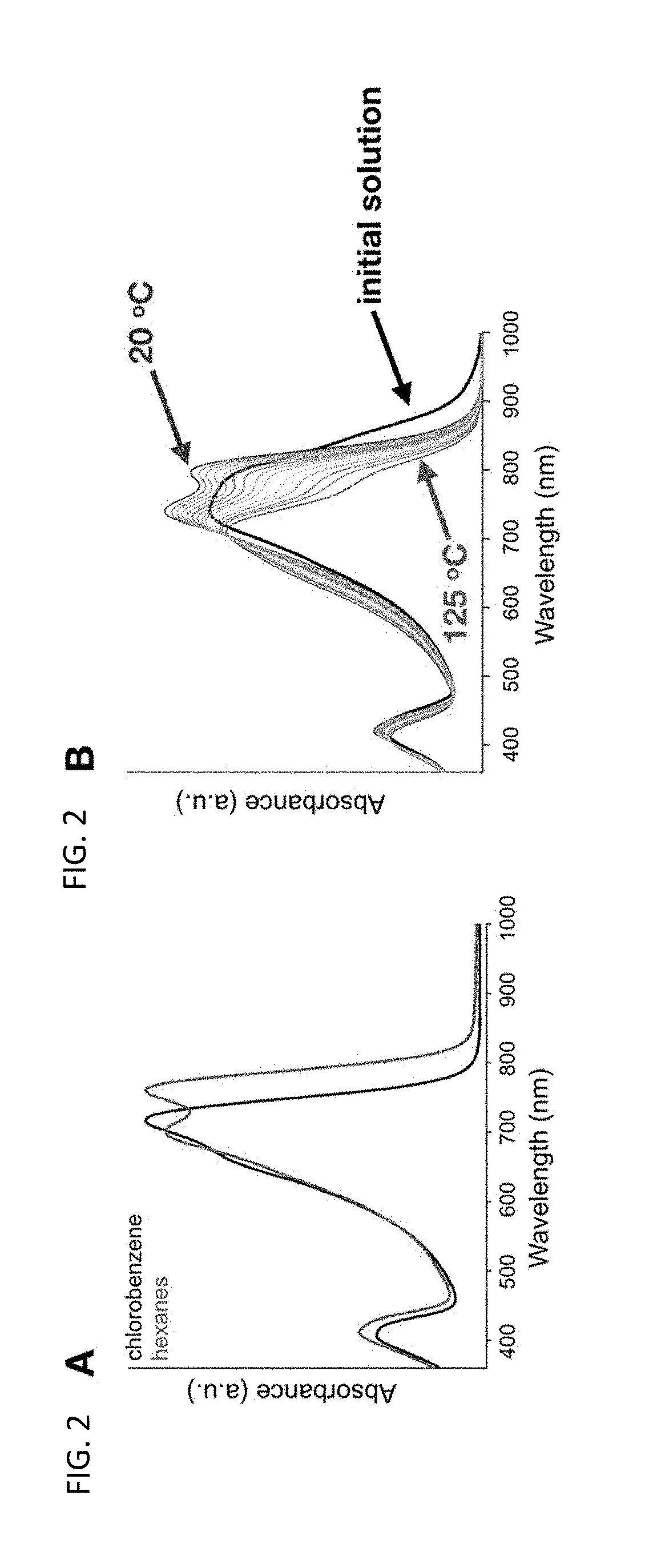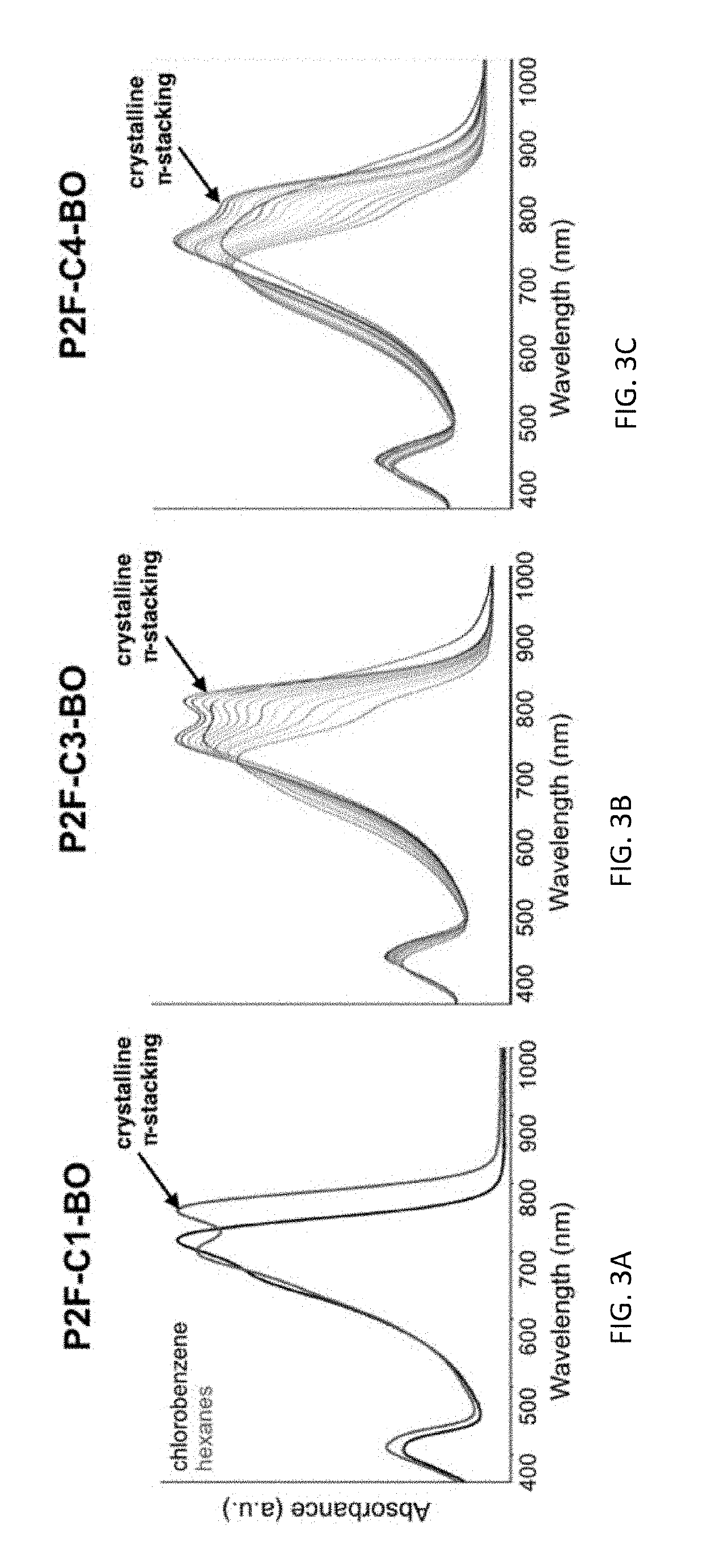Branch point effect on structure and electronic properties of conjugated polymers
a technology of conjugated polymers and cross-point effects, which is applied in the direction of electrical equipment, semiconductor devices, solid-state devices, etc., can solve the problems and achieve the effect of poor charge carrier mobility
- Summary
- Abstract
- Description
- Claims
- Application Information
AI Technical Summary
Benefits of technology
Problems solved by technology
Method used
Image
Examples
first example
1. P2F
[0085]Conventional semiconducting polymers such as regioregular (4,4-dialkyl-4H-cyclopenta[1,2-b:5,4-b0]dithiophene and 5-fluorobenzo[2,1,3]thiadizaole donor and acceptor units (P2F) polymers have shown high mobility, but poor solubility and poor control over crystalline fraction, unit cell, and orientation. While liquid crystalline mesophases consisting of these polymers exhibit the favorable control over crystalline fraction and orientation, they possess a unit cell having a large π-stacking distance, ultimately resulting in materials with low charge carrier mobility.
[0086]The examples presented herein illustrate the effect of side chain branch point location on structure, formation, and electronic properties of semiconducting polymers comprising regioregular (4,4-dialkyl-4H-cyclopenta[1,2-b:5,4-b0]dithiophene and 5-fluorobenzo[2,1,3]thiadizaole donor and acceptor units (P2F) having the structure:
where R is a branched side chain.
a. Structures
[0087]Using the methods describe...
PUM
| Property | Measurement | Unit |
|---|---|---|
| Lattice constant | aaaaa | aaaaa |
| Lattice constant | aaaaa | aaaaa |
| Thickness | aaaaa | aaaaa |
Abstract
Description
Claims
Application Information
 Login to View More
Login to View More - R&D
- Intellectual Property
- Life Sciences
- Materials
- Tech Scout
- Unparalleled Data Quality
- Higher Quality Content
- 60% Fewer Hallucinations
Browse by: Latest US Patents, China's latest patents, Technical Efficacy Thesaurus, Application Domain, Technology Topic, Popular Technical Reports.
© 2025 PatSnap. All rights reserved.Legal|Privacy policy|Modern Slavery Act Transparency Statement|Sitemap|About US| Contact US: help@patsnap.com



